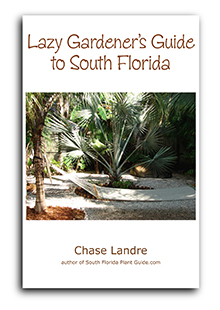Podocarpus
Podocarpus macrophyllus
Handsome and hardy, podocarpus is the ultimate in a low-maintenance shrub for sun or shade.

The soft, fine-textured foliage is great-looking when sheared as a formal hedge or left to grow more naturally as a large accent with minimal trimming required.
Because of its moderate growth rate it won't work as a hedge-in-a-hurry.
But given enough time these shrubs become thick, luxurious, full to the ground - and large enough to work as hedge bushes, privacy screens, or plants to camouflage unsightly things around the house.
These plants are also too large to use as foundation shrubs - although you see a lot of them used that way and they must be cut to within an inch of their lives. For a smaller version, use dwarf podocarpus.
There is a tree variety as well - the weeping podocarpus tree - which features the same hardiness and foliage in a beautiful weepy form.
You can grow this shrub as a tree, if you wish - it will form a large oval shape and lower branches can be trimmed up or left on.

Landscape companies often go overboard in trimming these shrubs, and the results aren't particularly pretty.
You
can keep this shrub clipped without taking it down to the bare minimum
of foliage...especially if you've planned ahead for the size of a mature
plant.
Because it takes shaping so well, this plant will fit in a narrow-depth area and can even be trained as a topiary specimen.
Podocarpus is truly the unsung hero of the South Florida plant world. Though it's not a garden show-off or especially beautiful it can come to the rescue in many situations.
I find myself recommending it often - for a hedge that spans areas from sun to shade, as a tall narrow barrier and privacy hedge, as one that works beautifully as a backdrop for showier plants, and so on. It's something you can count on to work in so many ways and it's relatively easy-care.
Plant specs
This is a moderate grower you can keep 5 to 7 feet or let it get larger - quite a bit, in fact, since the plant can grow as much as 40 feet tall.
It's evergreen, salt-tolerant, and cold tolerant, so it does well in any area of South Florida.
Sun or shade is just fine, though in shade these plants will grow more slowly. However, the color will look deeper and richer in a shadier spot than in a sunny one.
Tiny spring flowers are followed by purple berries (on female plants) and are edible for people and attractive to birds.
Plant care
Add top soil or organic peat moss and composted cow manure to the hole when you plant.
Trimming can be done frequently or not - depending on the look you want. The plant can look somewhat sparse and spindly when young, so cut it back in spring, if you do nothing else.
Hand pruners (rather than an electric trimmer) do a better job to shape and yet leave enough foliage after a trim to keep the shrub's good looks intact. Once mature, though, you can use hedge trimmers if you want a more manicured look.
Though this plant is drought-tolerant once established, it's best to water on a regular basis with time between waterings for the plant to dry out a bit.
Fertilize 3 times a year - in spring, summer, and autumn - with a top quality granular fertilizer.
Plant spacing
Place these shrubs 3 feet apart. Come away from the house 2-1/2 or 3 feet.
Along a walk or driveway, come in 4 to 5 feet to allow for mature size.
This plant will work in a large container.
Landscape uses for podocarpus
- hedge
- privacy screen
- camouflage plant
- along a blank wall
- lining a walk or drive
- large shrub for the corner of the house
- architectural accent
- backdrop for smaller plants
- along a fence
- for shade along a porch, deck or patio
- single yard specimen
A.K.A. (also known as): Japanese Yew
GOOD SNOWBIRD PLANT? YES
COMPANION PLANT SUGGESTIONS: In a sunny location, try juniper, dwarf ixora, Green Island ficus, hibiscus, dwarf fakahatchee grass, bush allamanda, and lantana.
Other plants you might like: Wax Myrtle, Eugenia
Take a break!
The ultimate guide to low-maintenance plants
and landscaping!
An ebook by
Chase Landre
author of
South-Florida-Plant-Guide.com
Learn more!
Get a greener thumb!
Want to learn more about South Florida planting, watering, fertilizing and dealing with weeds and pests?
See our Gardening How-To section for answers!
Get instant curb appeal!
An ebook by
Chase Landre
author of
South-Florida-Plant-Guide.com
Learn how to get instant curb appeal with fast growing plants and landscaping techniques!



